Art World
Can a New V&A Design Museum Bring the ‘Bilbao Effect’ to Scotland? One City Is Betting $100 Million on It
Politicians and funders remained on board for years, even when the cost of the V&A Dundee soared to more than $100 million.
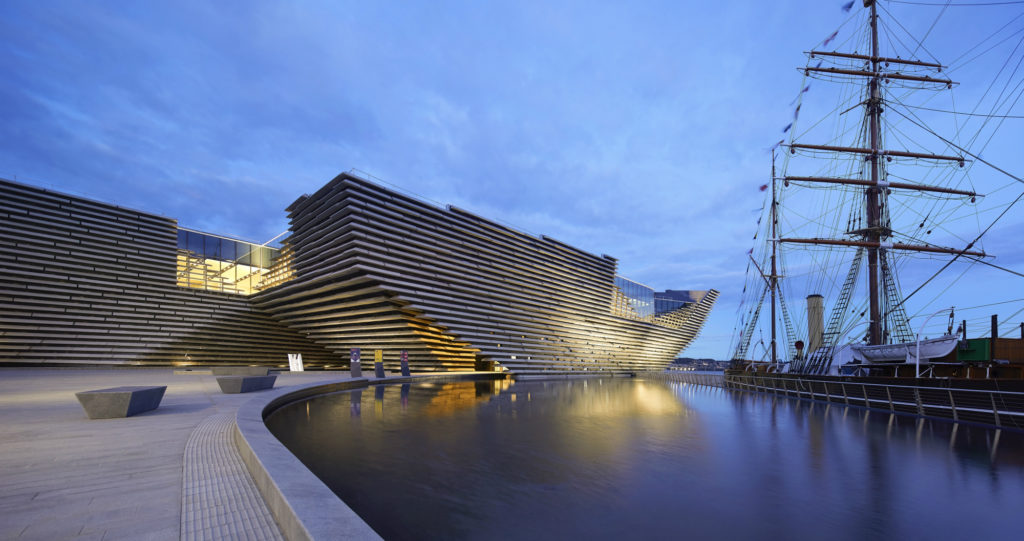
Politicians and funders remained on board for years, even when the cost of the V&A Dundee soared to more than $100 million.

Javier Pes

If you want the “Bilbao effect,” you have to be willing to pay for it. And it doesn’t come cheap.
Over the past decade, the V&A and the city of Dundee have learned this truth the hard way. After years of cost overruns and construction delays, the V&A Dundee, Scotland’s impressive new design museum, finally opens to the public on Saturday. The £80 million ($104 million) building is around four years late and $50 million over budget. Like Bilbao, Dundee is hoping that the combination of a spectacular building by an international architect and the imprimatur of a recognized museum brand will go a long way in turning the former industrial city into a cultural destination.
Time will tell whether the V&A Dundee, designed by Japanese architect Kengo Kuma, will achieve its ambitious mission. But the Scottish city has already displayed its commitment to culturally-led regeneration. The Dundee Contemporary Arts center opened in 1999, and a decade later, the city unveiled a pricey revamp of its McManus Galleries. A new waterfront park is being created and an arts center in a former printworks has just been announced. It could be home to a new comic museum drawing on the archive of DC Thomson, famous for Desperate Dan, Dennis the Menace, and his sidekick Gnasher the dog. (The cartoon anti-heroes are celebrated in Dundee’s public art, at the McManus and in V&A Dundee, so a custody battle is unlikely.)
Unlike politicians in Helsinki, who balked at the astronomical cost of a Guggenheim satellite, the leader of Dundee’s city council, John Alexander, is bullish on the value of the V&A Dundee and other investments in cultural infrastructure. He says the project has renewed a sense of pride and “put fire in the belly” of a city that for too long seemed a poor relation to larger neighboring cities.
Kuma’s splashy new building overlooks the River Tay and sits alongside the RSS Discovery, the ship that Shackleton and Scott sailed to Antarctica in the early 20th century. The building is, in fact, two forms that join together at the top to create an archway, framing a picturesque view of the river. Tristram Hunt, the director of the V&A, notes that Queen Victoria and Prince Albert sailed up the same river as a young married couple. The museum’s archway serves as a nod to the triumphal arch the city built on its harbor to celebrate the royal visit in 1844.
Although the Victorian Royal Arch was demolished in the mid-1960s, the Japanese architect’s competition-winning design forms a somewhat Brutalist successor. Kuma has wrapped the building in concrete bands, creating sleek lines that add interest to what would otherwise have been a hulk-like structure. From multiple angles, the building resembles the outline of a ship—an apt or obvious metaphor for the waterside location, depending on your point of view. The tunnel effect of the arch will be impressive when the wind blows, as it does a lot on the exposed site.
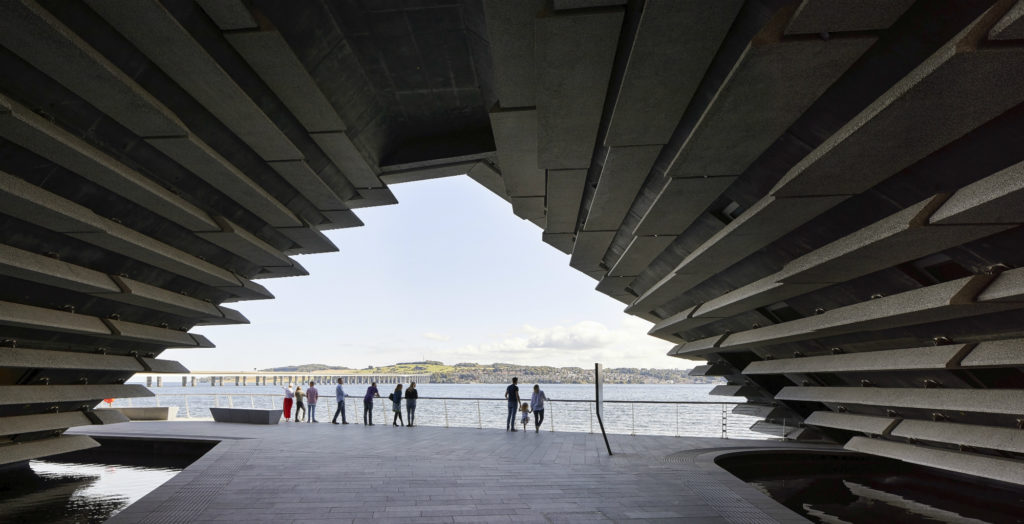
V&A Dundee, Copyright Hufton+Crow.
The project had to sail through some choppy financial and political waters in order to arrive safely at the harbor. First mooted in 2007 when Mark Jones was the director of the V&A, it gathered speed under the late Martin Roth. It hit another storm when its projected budget soared high above its original $60 million estimate. At the press preview, Philip Long, the director of the V&A Dundee, paid tribute to the funders and local politicians who stood by the project and refused to “water down” the building’s design.
Each of the 2,429 precast concrete panels on the exterior—as well as the thousands of slatted oak panels that help soften the lobby inside—had to be cut just so. The architect hopes the entry will become a “living room” for Dundonians. A few more couches and soft furnishings might help achieve that effect; the space also cries out for works of art. So far, Turner Prize nominee Ciara Phillips has been commissioned to create a wall piece. (Fellow Scottish artist Jim Lambie or David Batchelor, who was born in Dundee, could work wonders in the cavernous space as well.)
The V&A Dundee could have been sunk for good if Scotland had voted for independence in 2014, because its two key funders are the UK government in Westminster and the Scottish government in Edinburgh. It is also unlikely that organizers could have raised enough money to pull off the project today, since the National Lottery (which provided $22 million) has suffered from a dip in income and the Heritage Lottery Fund, which has always been averse to funding new museums, now only makes gifts a third the size of the one the V&A Dundee received.
“The planets were in alignment,” Hunt says of the partnership between the V&A, two governments, Dundee’s two universities, and the city council. Both Hunt and Long stressed that the V&A in London and the V&A Dundee are partners with a shared brand and collection, but independent exhibition programs. The Scottish outpost cannot be a “receiving house” for exhibitions from South Kensington, Long told artnet News, although he declined to say what he has planned in-house or in partnership with other institutions.
The 11,840-square-foot suite of galleries for temporary exhibitions is twice as large as the gallery that houses a long-term display of Scottish design. Both will need to work hard to draw in the hoped-for 350,000 annual visitors: Dundee’s population is less than 150,000.
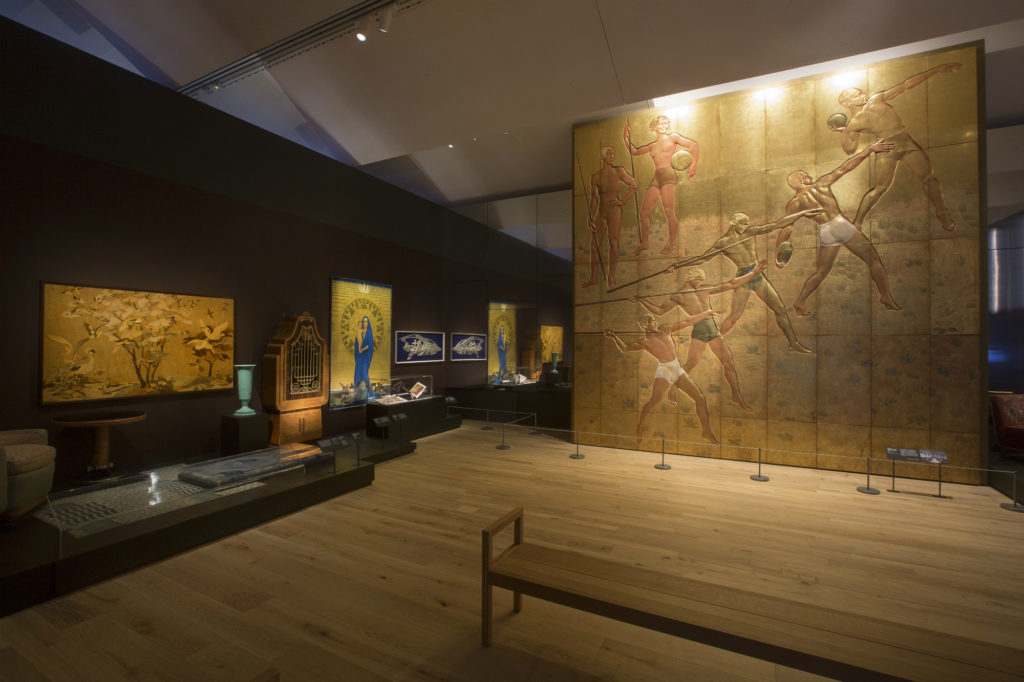
Art deco wall piece from the Normandie is a star loan from Paris on show in the “Ocean Liners” exhibition. Photo by Michael McGurk.
The museum’s inaugural show, “Ocean Liners: Speed and Style,” is a logical choice for Scotland, where many great ships were built. A co-production by the Peabody Essex Museum, the V&A, and V&A Dundee, it opened in Salem before traveling to London and arriving in Scotland. Daniel Finamore, the curator of maritime history and art at the PEM, says these kinds of collaborations are the way forward for museums with finite resources and international ambitions.
Entry to V&A Dundee is free, but temporary exhibitions require tickets (though they are half the cost of those in London). Income from ticket sales, the shop, restaurant, and corporate sponsorship will supplement the £4.5 million (around $6 million) provided by the Scottish government to cover operating costs.
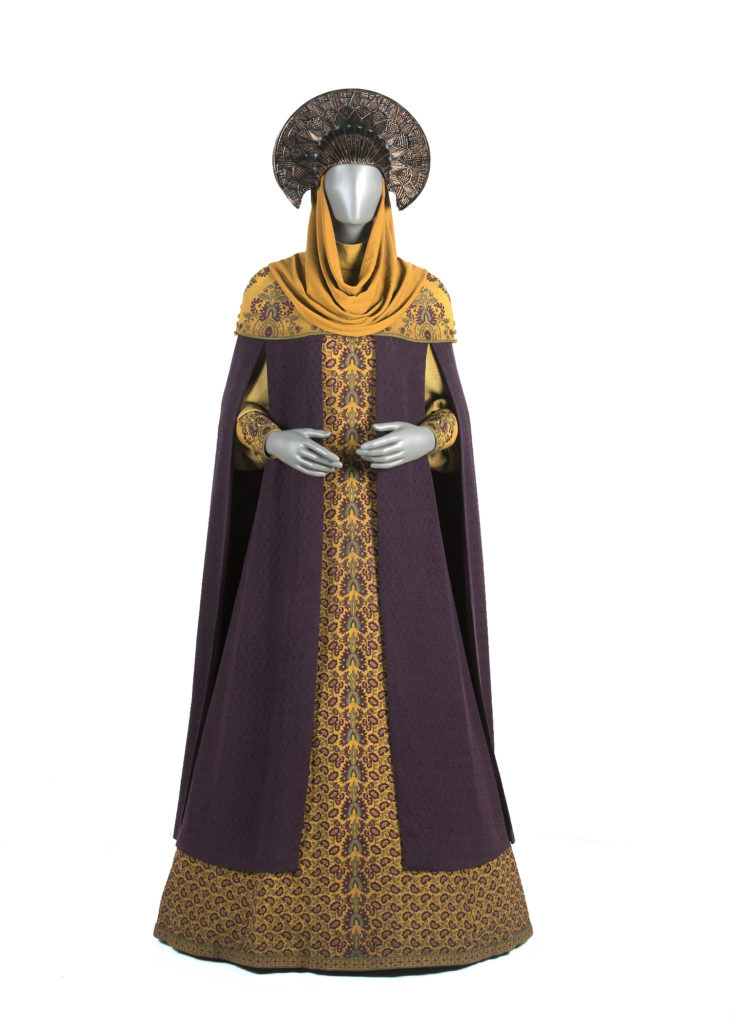
Star Wars costume on loan from the Lucas Museum of Narrative Art, Los Angeles.
The V&A curators scoured storage facilities for objects with a Scottish connection to furnish the Scottish design galleries. Exhibition designers ZMMA have created an elegant and well-paced gallery of eclectic objects ranging from paisley fabric inspired by designs from Kashmir to an Alexander McQueen Widows of Culloden dress Also on view is Frank Gehry’s paper model, held together with tape, for the cancer treatment facility Maggie’s Center in Dundee, the architect’s first UK building. In a nod to Dundee’s burgeoning video games industry, a game called Lemmings plays on a screen overhead. The museum’s first designer-in-residence, Simon Meek, is also a game designer.
But the coup de théâtre is ZMMA’s installation of the Oak Room, a newly restored Glasgow tearoom designed by famed architect Charles Rennie Mackintosh in 1907. It is generously on loan from Glasgow Museums, which normally displays a bay of the interior in the Kelvingrove Museum. The rest of the room was previously in pieces in storage. Now, visitors have the opportunity to walk into the double-height space. After a fire destroyed Mackintosh’s Glasgow School of Art in July, the oak paneling is even more precious and evocative.
Another talking point comes courtesy of George Lucas’s Museum of Narrative Art in Los Angeles. For the next six months, V&A Dundee is borrowing the costume worn by Natalie Portman in Star Wars: Attack of the Clones; it was designed by Scottish-born Trisha Biggar.
All told, there are around 200 objects drawn from the V&A collection on view in the Scottish design galleries. The gallery is expected to last 25 years, but given the size of the V&A’s collection and the many millions spent building V&A Dundee, some skeptics may question the value for money per object. The Scottish outpost will not build its own collection, devolving acquisitions and storage to the London mothership. This will save money in the short run but may limit the museum in the future.
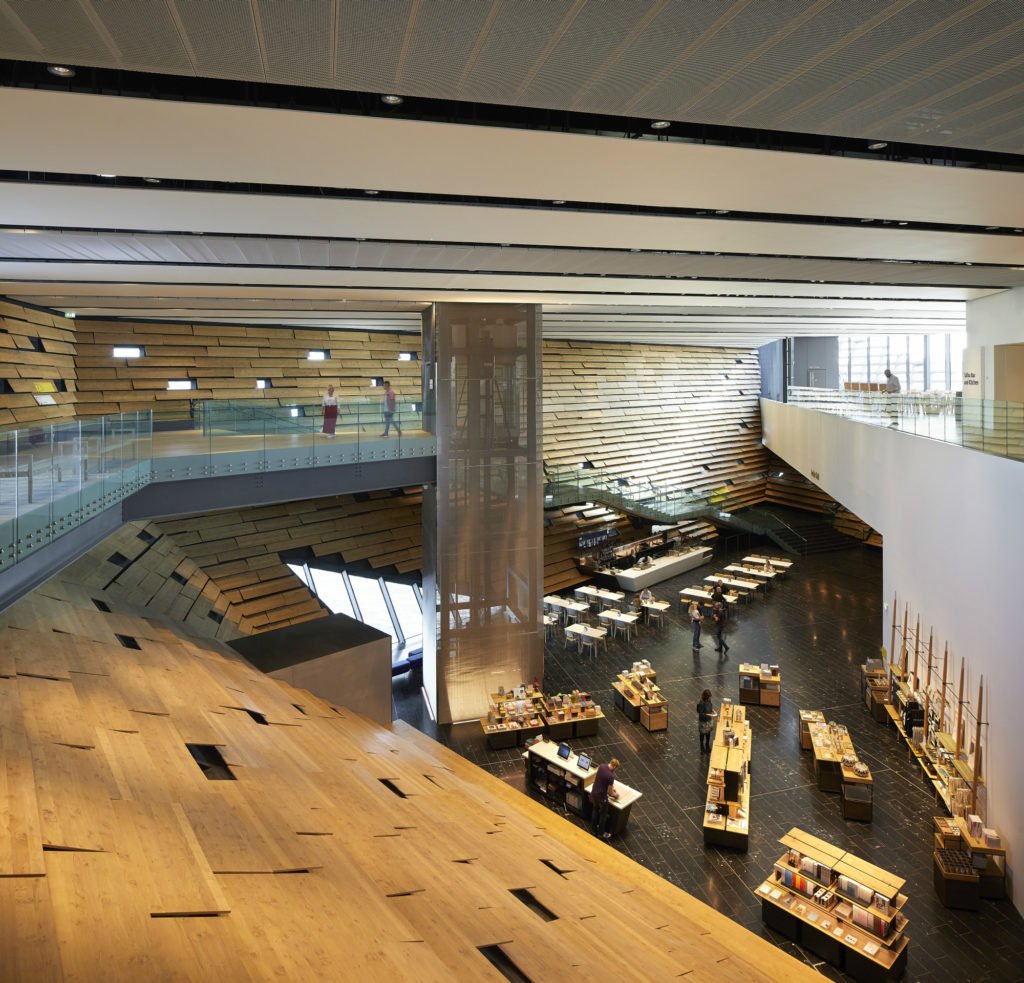
Kengo Kuma has designed a new arch for Dundee. Copyright Hufton+Crow.
The V&A Dundee brings the number of V&A sites open or in the pipeline to seven. Two new ones are being built in East London and its first Chinese franchise opened last year in Shenzhen. Tristram Hunt sounded as proud as any Victorian paterfamilias when he declared how honored he was to welcome the Dundee museum into the “V&A family,” declaring it to be no, mere “branch office.”
Could that family grow even larger in the future? Hunt confirmed that the V&A gets invitations to form new partnerships regularly, although “it is slowing off,” he said. But with V&A Dundee opening its large and shining doors, there may be another flurry of proposals heading his way.